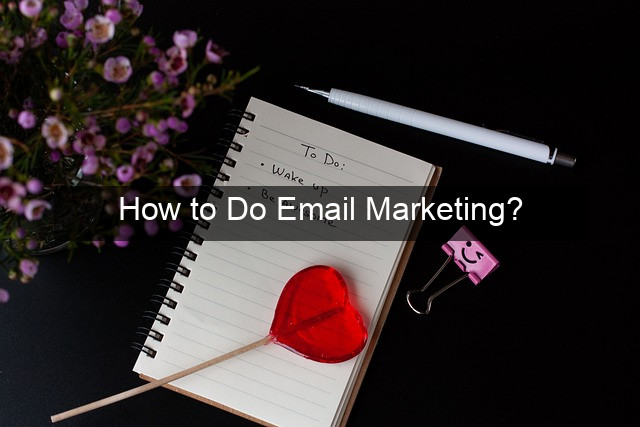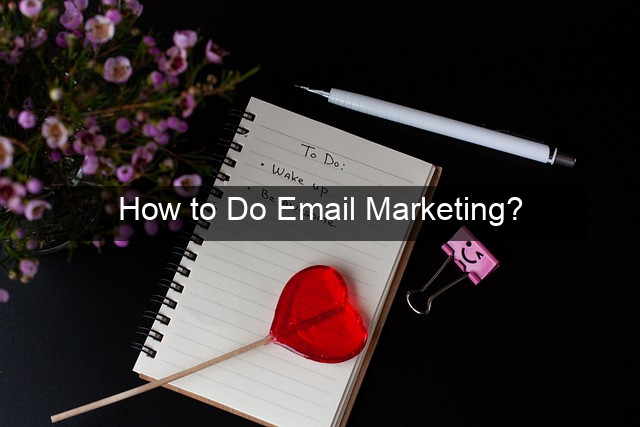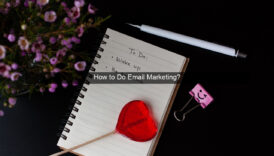How to Do Email Marketing?

- How to Do Email Marketing?
- How to Do Email Marketing Effectively
- Building a Targeted Email List
- The Importance of Organic Growth
- Optimizing Your Signup Forms
- Crafting Compelling Email Content
- Understanding Your Audience
- Writing Engaging Subject Lines
- Email Marketing Automation
- Setting Up Automated Email Sequences
- Utilizing Email Marketing Software
- Analyzing and Optimizing Your Campaigns
- Key Email Marketing Metrics
- Conclusion
- Frequently Asked Questions

How to Do Email Marketing Effectively
Email marketing remains a powerhouse in the digital marketing landscape. It’s a direct line to your audience, offering a personalized way to nurture leads, build relationships, and drive conversions. But with inboxes overflowing, cutting through the noise and making your emails stand out requires a strategic approach. This guide dives deep into the essentials of effective email marketing, providing actionable steps to create campaigns that resonate with your subscribers and deliver tangible results. From building your list organically to crafting compelling content and analyzing your performance, we’ll cover everything you need to know to master the art of email marketing.
Forget the misconception that email marketing is outdated. When executed correctly, it’s a highly effective tool for boosting brand awareness, driving sales, and fostering customer loyalty. This isn’t about spamming your audience; it’s about providing valuable content, personalized offers, and timely updates that they genuinely want to receive. By understanding your audience and tailoring your messages to their specific needs and interests, you can transform your email marketing from a mere communication channel into a powerful revenue-generating engine.
Building a Targeted Email List
The Importance of Organic Growth
Building an email list organically is crucial for long-term success. Focus on attracting subscribers who are genuinely interested in your brand and its offerings. This approach ensures higher engagement rates, lower unsubscribe rates, and ultimately, a more receptive audience for your marketing messages. Avoid buying email lists, as this practice can damage your reputation and lead to low open and click-through rates.
Organic growth focuses on providing value in exchange for an email address. Offer compelling lead magnets such as ebooks, exclusive discounts, webinars, or free trials to incentivize sign-ups. Make the signup process simple and transparent, clearly outlining the benefits subscribers will receive. This builds trust and sets the stage for a positive ongoing relationship.
Implementing double opt-in confirms that subscribers genuinely want to receive your emails, further improving the quality of your list. This process involves sending a confirmation email after signup, requiring users to click a link to verify their subscription. While it may slightly reduce your initial subscriber count, it significantly enhances the engagement and deliverability of your future campaigns.
Optimizing Your Signup Forms
Strategic placement and design of your signup forms are essential for capturing leads. Place forms prominently on your website, such as in the header, footer, or within blog posts. Use clear call-to-actions that highlight the value proposition of subscribing. Keep the form fields concise, only requesting essential information like name and email address.
A/B testing different signup forms can help you optimize conversions. Experiment with different form placements, copy, and design elements to identify what resonates best with your audience. Continuously analyze and refine your approach to maximize signup rates.
Consider using pop-up forms strategically. While they can be intrusive if not implemented carefully, they can be highly effective in capturing attention and driving subscriptions. Use exit-intent pop-ups that appear when a user is about to leave your website, offering a last-minute incentive to subscribe.
Crafting Compelling Email Content
Understanding Your Audience
Before crafting your emails, thoroughly understand your target audience. What are their needs, interests, and pain points? Segment your list based on demographics, behavior, and purchase history to personalize your messaging and deliver more relevant content. The more targeted your emails, the higher the chances of engagement and conversion.
Conduct surveys and analyze website analytics to gather valuable insights into your audience’s preferences. Use this information to tailor your email content, subject lines, and offers. By speaking directly to their specific needs, you can build stronger connections and foster greater loyalty.
Regularly review and update your audience segments to ensure they remain accurate and relevant. As your audience evolves, so should your messaging. Stay attuned to their changing needs and adjust your email marketing strategy accordingly.
Writing Engaging Subject Lines
Your subject line is the first impression you make, and it often determines whether your email gets opened or ignored. Craft compelling subject lines that are concise, intriguing, and clearly communicate the value proposition of the email. Avoid using spammy words or misleading tactics that could damage your reputation.
Personalize your subject lines by including the recipient’s name or referencing their past interactions with your brand. This adds a personal touch and increases the likelihood of the email being opened. A/B test different subject lines to identify what resonates best with your audience and optimize your open rates.
Keep your subject lines short and to the point, especially for mobile users. Most email clients truncate subject lines on mobile devices, so ensure the most important information is conveyed within the first few words.
Email Marketing Automation
Setting Up Automated Email Sequences
Email automation allows you to send targeted messages to subscribers based on specific triggers or actions. Set up welcome emails for new subscribers, abandoned cart reminders for shoppers who leave items in their online carts, and post-purchase follow-ups to thank customers and encourage repeat business.
Automated email sequences nurture leads, build relationships, and drive conversions without manual intervention. By automating repetitive tasks, you can free up your time to focus on other aspects of your marketing strategy. Use automation to deliver personalized content and offers at the right time, maximizing the impact of your email marketing efforts.
Segment your audience and tailor your automated sequences to their specific needs and interests. This ensures that subscribers receive relevant and valuable content, increasing engagement and conversion rates.
Utilizing Email Marketing Software
Email marketing software provides the tools and features you need to manage your email list, create and send campaigns, and track your results. Choose a platform that offers robust automation capabilities, segmentation options, and analytics reporting. Integrate your email marketing software with your other marketing tools to streamline your workflows and gain a holistic view of your customer journey.
Many email marketing platforms offer pre-built templates and drag-and-drop editors to simplify the email creation process. Leverage these features to create visually appealing and professional-looking emails without requiring extensive coding knowledge.
Take advantage of the analytics and reporting features offered by your email marketing software to track key metrics such as open rates, click-through rates, and conversion rates. Analyze this data to identify what’s working, what’s not, and make data-driven decisions to optimize your campaigns.
Analyzing and Optimizing Your Campaigns
Key Email Marketing Metrics
| Metric | Description |
|---|---|
| Open Rate | Percentage of recipients who opened your email. |
| Click-Through Rate | Percentage of recipients who clicked on a link within your email. |
| Conversion Rate | Percentage of recipients who completed a desired action, such as making a purchase. |
Tracking key metrics is essential for understanding the effectiveness of your email marketing campaigns. Monitor your open rates, click-through rates, conversion rates, and unsubscribe rates to identify areas for improvement. Analyze your data to understand what resonates with your audience and what doesn’t.
Use A/B testing to experiment with different email elements, such as subject lines, calls to action, and email design. By comparing the performance of different versions, you can identify what works best and optimize your campaigns for maximum impact. Continuously analyze and refine your approach to improve your results over time.
Regularly review your email list and remove inactive subscribers. This improves your deliverability rates and ensures that your messages are reaching engaged recipients. Maintaining a clean and active email list is crucial for the long-term success of your email marketing efforts.

Conclusion
Email marketing remains a potent tool for businesses seeking to connect with their audience, nurture leads, and drive conversions. By implementing the strategies outlined in this guide, you can harness the power of email to build lasting relationships, boost brand awareness, and achieve your marketing objectives. Remember that successful email marketing is an ongoing process of learning, adapting, and refining your approach based on data and audience feedback. Stay current with industry best practices and continue experimenting to discover what works best for your unique business needs.
Frequently Asked Questions
What is the best time to send emails?
There’s no universally “best” time, as it depends on your audience and industry. Experiment and analyze your data to find what works for you.
How often should I send emails?
Consistency is key, but avoid overwhelming your subscribers. Start with a weekly newsletter and adjust based on audience engagement and feedback.
How do I avoid getting my emails marked as spam?
Avoid using spammy words in your subject lines and email content. Ensure your subscribers have opted in to receive your emails and provide a clear unsubscribe option.
What is email segmentation?
Email segmentation involves dividing your email list into smaller groups based on shared characteristics, allowing


